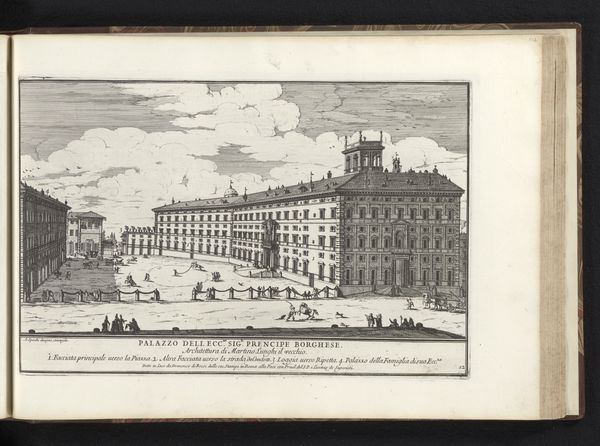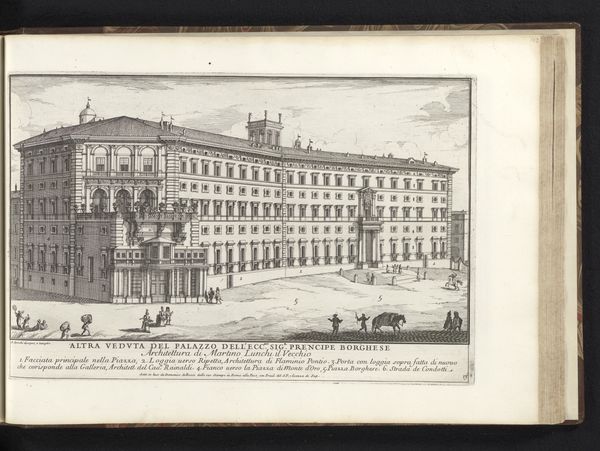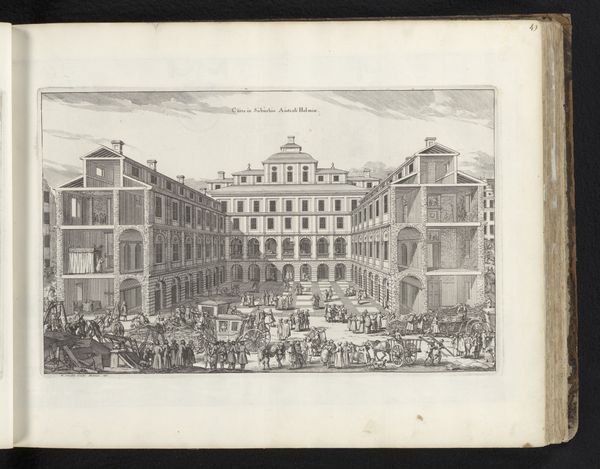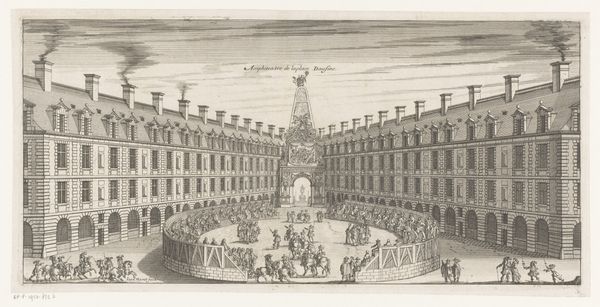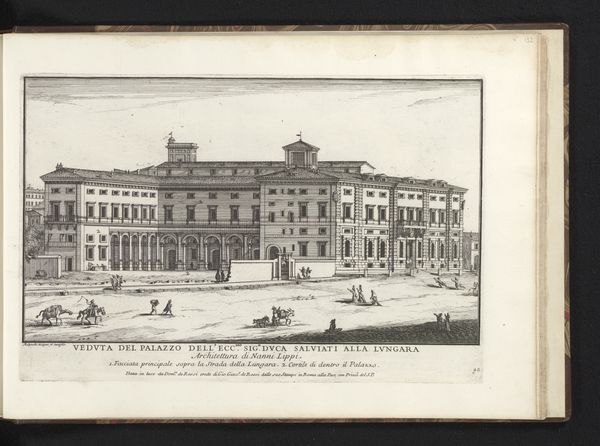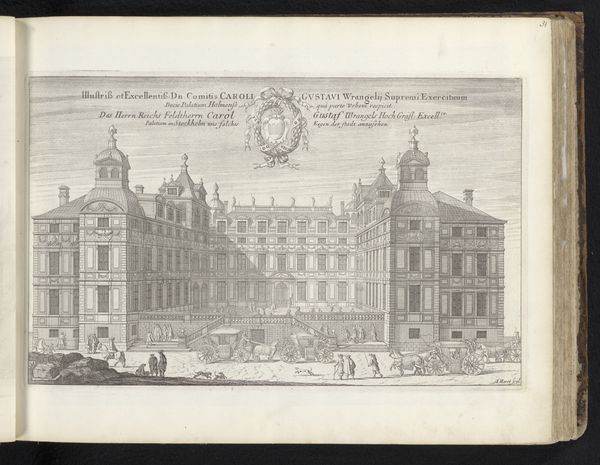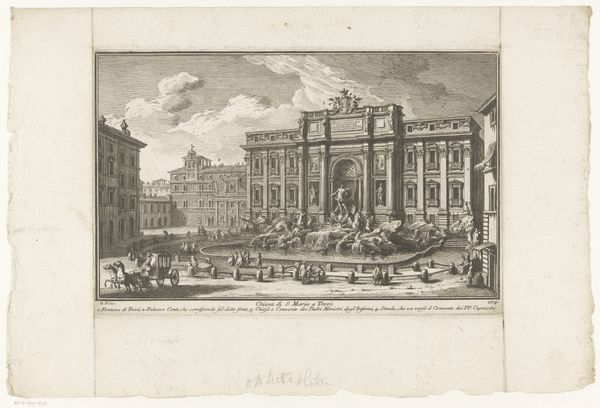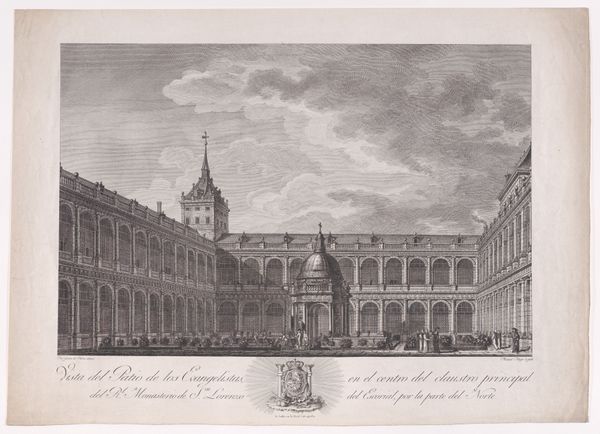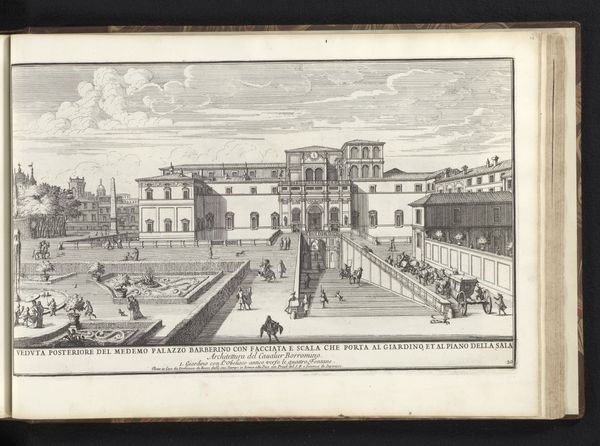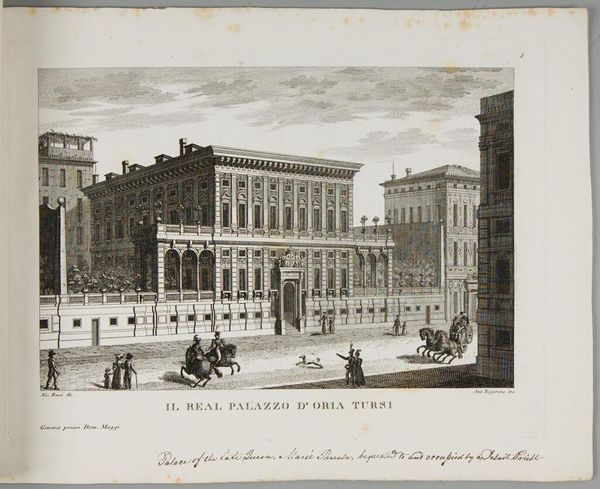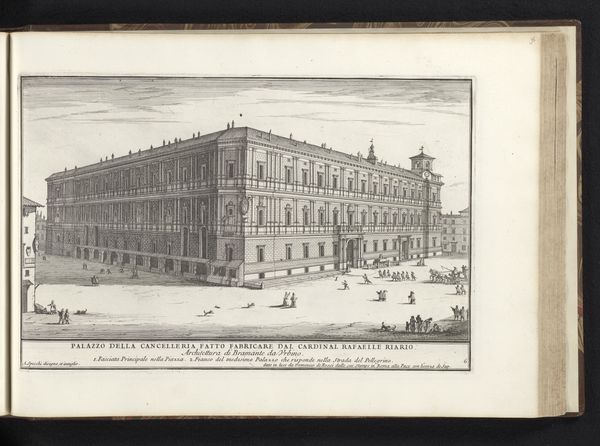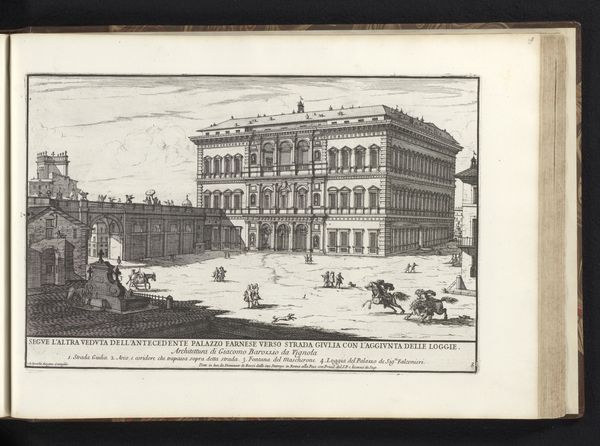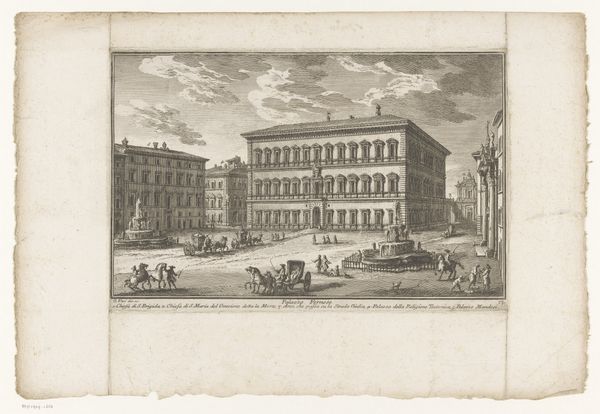
drawing, print, pen, engraving, architecture
#
drawing
#
aged paper
#
toned paper
#
baroque
#
mechanical pen drawing
# print
#
old engraving style
#
sketch book
#
personal sketchbook
#
pen-ink sketch
#
pen and pencil
#
pen work
#
pen
#
cityscape
#
engraving
#
pencil art
#
architecture
Dimensions: height 244 mm, width 380 mm
Copyright: Rijks Museum: Open Domain
Curator: Before us, we have Alessandro Specchi's "Palazzo Montecitorio te Rome," an engraving dating back to 1699. Editor: Woah, okay. I’m immediately hit by how meticulously detailed it is! Almost obsessive, you know? All those tiny figures and windows… It's like looking at a city block populated by ants. Slightly unsettling but compelling. Curator: It’s important to situate Specchi's work within the artistic and political climate of Baroque Rome. This piece captures not only the architectural grandeur of the Palazzo but also, subtly, the performative aspects of power. The procession, for example, signals civic authority, all framed through the papacy’s focus on justice under Innocent XII. Editor: Power indeed! The composition feels intentionally designed to emphasize the almost god-like scale of the palace versus the masses. Though I wonder if he intended to have it look like this or just needed to make everything fit on the page... you can't quite put your finger on his feelings here. Curator: Scale and visual perspective were important ideological tools. The print format enabled widespread dissemination, underscoring the reach and influence of papal Rome at that time. We need to consider how it participated in consolidating the authority of both the building's function and the Catholic Church's dominion. Editor: I guess. Though looking at it, there is also something cool about how all those busy lines sort of give you that ‘living city’ vibe, despite its formality. And the aged paper tone kind of lends this immediate gravitas – like some lost artifact unearthed after centuries, right? Curator: Absolutely, this ‘lost artifact’ aesthetic draws attention to historical layers of political dynamics. It helps to understand the networks of power within the art world then, and how these continue affecting architectural displays even now. Editor: Food for thought. I came in seeing lines, but now I realize the drawing invites us to interpret what it actually MEANS... in relationship to who made it, who it shows, and heck, even us looking at it now. That’s pretty powerful stuff.
Comments
No comments
Be the first to comment and join the conversation on the ultimate creative platform.
